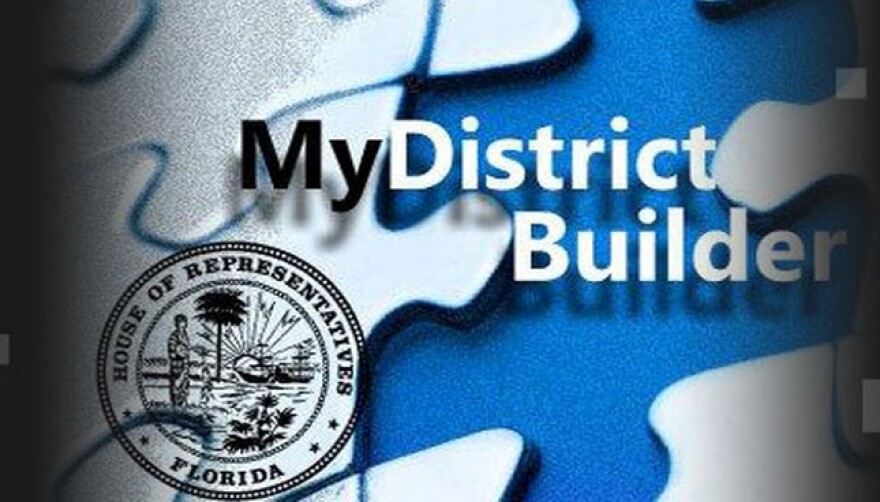As voting rights groups wrapped up their case in Florida’s redistricting trial this week, a picture emerged of GOP operatives working behind the scenes to get their maps submitted to the Legislature. Questions centered on exactly how a Republican-generated map got submitted under the name of an FSU student.
The big question Circuit Judge Terry Lewis must answer is: Did the 2012 Florida Legislature comply with the state’s “Fair Districts” amendments when they drew new congressional district boundaries? The amendments are twofold: They say lawmakers must draw compact districts, and they must not intend to favor a party or incumbent.
Judge Lewis says he’s weighing both parts.
“You can have all the best intent in the world and draw a crazy map that doesn’t comply with the constitutional mandate," Lewis said this week.
Voting-rights groups backed by the Florida Democratic Party are attempting to prove Republican lawmakers erred on both compactness and intent.
First, compactness. Stanford University political scientist Jonathan Rodden testified his computer simulations of Florida’s maps produced more compact districts than the Legislature’s again and again.
“The most recent report with 1,000 simulations in it—each of those simulations is more compact than the Legislature’s plan," he says.
Rodden says, while the constitution prohibits partisan considerations, it also gives the job of map drawing to whichever party happens to be running the Legislature. So, he says the only way to have 100 percent politically blind districts is to let computers draw them.
As former House Speaker Dean Cannon pointed out on the stand, after the Fair Districts amendments passed, partisan habits were hard to break for political strategists who’d always been allowed input.
“I think all the political consultants, both Republican and Democrat, desperately wanted to be involved in the process, and I wanted to figure out what was and was not permissible because I was responsible both constitutionally, and I felt a personal obligation, to oversee the process in the House," he says.
But plaintiffs’ lawyers argue consultants found way to stay involved. They presented evidence that legislative leaders remained in contact with GOP consultants who generated maps throughout the process—and that one of those maps, drawn by Florida Republican Party official Frank Terraferma, was the basis for the congressional map that passed.
In an e-mail, Terraferma seems to be telling GOP consultant Rich Heffley he was having trouble submitting maps through the Legislature’s public website. Attorney David King asked Heffley about the e-mail.
“Aren’t you being asked the question by Mr. Terraferma, who’s been supporting your efforts, as to whether he should try to get this map resubmitted again in the public portal after it bounced back?”
Heffley replied, “It sure looks that way.”
King continued, “Well it does. And your response was, ‘Might as well submit. The worst they can do is not take it.’ Right?”
“Correct," Heffley said.
Heffley admits to sharing maps with others in the consultant community and encouraging people to submit them. But he says he doesn’t know who submitted a key map under the name of FSU student Alex Posada.
King asked him, “And you don’t know who among your group had anything to do with that, is that right?”
“Not specifically, no," he answered.
Specifics were also sketchy in Terraferma’s mind. He testified he drew and shared maps with Heffley and others, but his memory seemed hazy after that.
King asked Terraferma, “Is it your testimony, sir, that you never, ever asked Mr. Heffley, ‘What are you doing with my maps?’"
Terraferma replied, "I just don’t recall a conversation where I asked him that or where he told me that. But certainly it seems like we were sharing the maps and they might be publicly submitted.”
When Heffley was asked, why draw maps at all if operatives weren’t legally allowed input on redistricting, he said, as a Senate campaign consultant he would have been interested in congressional maps too to see how they’d affect state district boundaries.
Lewis has hinted several times that he expects his ruling in the case to be appealed to the First District Court of Appeal and potentially higher than that. So, if maps do need to be redrawn for breaking the Fair Districts amendments, it could be well after the November elections.




